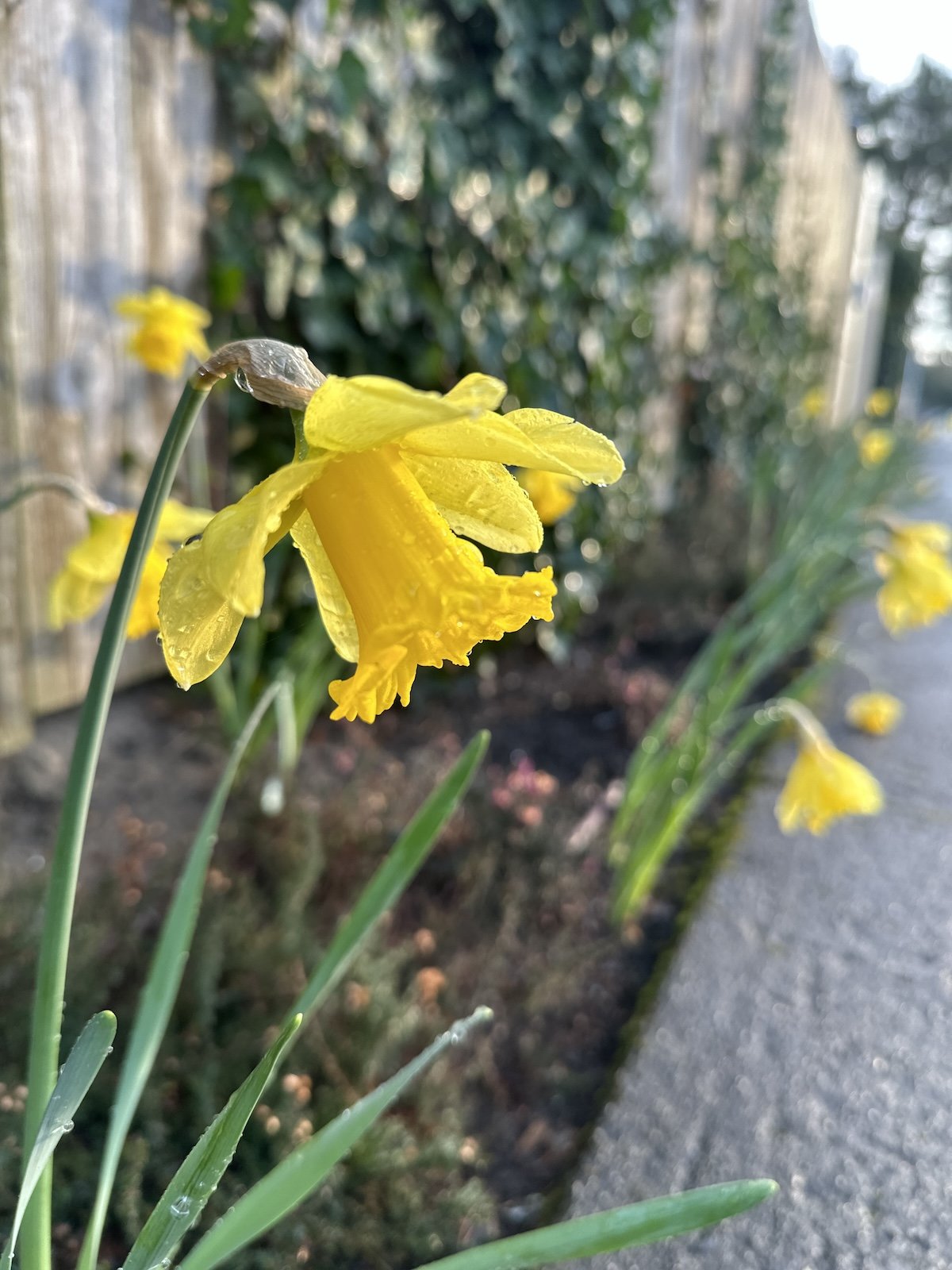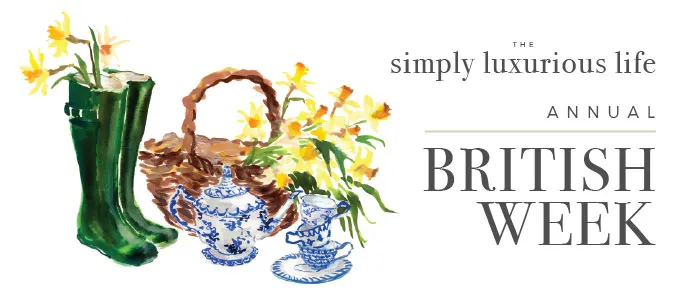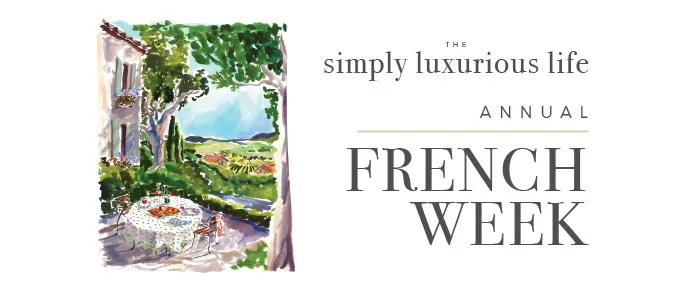Become a Member for as little as $4/mo and enjoy unlimited reading of TSLL blog.
“Contentment is falling in love with your life.” —Swami Rama, an Indian yogi guru
Right now, in this very moment, we each have a life to love. Yep, our life is waiting, if we haven’t done so already, for us to fall in love with it.
But wait, some might say, I haven’t [fill in the blank of a desired outcome you are working toward]. However, when I reach that point, I will be content! And THEN I will fall in love with my life. Oh, but we miss so much depth of living when we wait. Because if we would only cultivate contentment, our mode of travel each and everyday would reveal how amazing life really can be.
Contentment is a chosen mode of transportation while on our life journey, an opportunity to continually evolve, grow, discover, and savor. And of course when desired goals are reached as well, but what I think most of us will share upon arrival of said goals is that, it isn’t about the outward gained accolades or approval from society that will provide the ‘missing’ piece to being able to be fulfilled, but rather our gained awareness that if we forgot to be present and thus miss seeing all that life already is right here and now, we miss out on what makes life absolutely incredibly amazing.
Don’t get me wrong, publishing that book, winning that award, will certainly provide a dopamine hit temporarily, but when that wears off, where do we reside? If we reside in Contentment, life will continue to be rich, rewarding and delicious, offering delights and wonderment to savor from the moment we wake up until the second we drift off to sleep at night. Because the keys to a fulfilling life reside within each one of us, and not in the seeking something outside of ourselves.
But first, let’s make sure we understand why Contentment and Complacency are contrary to one another.
In response to falling in love with our life right now as it is, even if we wish to improve or reach or achieve something more, some may even go on to say, based on the dictionary definition of the feeling content, if we reside in the conceptual term Contentment, then we are idle, that we are stagnant and unchanging; however, that would reveal a lack of understanding as to what Contentment is versus feeling content. And that is why I have been looking forward to sharing today’s post with you.
Such quandaries make sense, and I would be wondering the same thing prior to my exploration of this topic of Contentment. Because yes, content is an emotion, one of a myriad of emotions we can experience at any given moment; however, Contentment, also known as Santosha in the Yoga ethos, is a way of being each and every day of our lives so that we can be wholly in the present moment and therefore be fully engaged and open to all that our life journey wishes for us to see, witness and partake in as it aligns with our true self.
Complacency on the other hand is a state of stillness, of being so self-satisfied that we no longer grow or remain curious. Refraining from these two practices alone is antithetical to Contentment because when we reside in Contentment, we engage with a growth mindset and curiosity is our constant travel companion.
Cambridge Dictionary defines complacency as “a feeling of calm satisfaction with your own abilities or situation that prevents you from trying harder”. Unfortunately, Collins Dictionary misrepresents the term Contentment and includes it as a definition for complacency, but to truly know what contentment is, is to realize the two terms are adversely opposed to one another. Complacency, as defined by Merriam-Webster, involves smugness and a lack of awareness, both of which are antithetical to what Contentment requires – an open-mind free of expectation and being grounded in awareness.
When we reside and are grounded in Contentment, we are forever curious and continually toning the skills that enable contentment to be experienced in our everydays. From mindfulness practices, gratitude, emotional intelligence, self-awareness, simple awareness, each of these are skills that hone our ability to experience the steadying peace that Contentment provides no matter what is swirling about outside of us.
Recently, I discovered that the solar panels I have on my roof that reduce my electric bill each month due to all of the Bend Blue Bird Days we are fortunate to experience was off-line. Because I had so much stored energy on reserve, it took me two months to realize the panels had been offline, but I hadn’t noticed because my monthly bills for three months afterwards were continually low as I had become accustomed. It wasn’t until the first bill arrived after all my reserved energy was used up that I realized I needed to tend to my panels. I share this with you because Contentment works in a similar way. We have to regularly put in the conscious effort each day well before we need to possess the skill to navigate the unwanted moments. Because if we are sporadic about our skill training or hope we will know what to do in the moment or after the fact, we are not residing in Contentment, but instead wishing we had put the effort in ahead of time and scrambling, thus causing ourselves unnecessary stress and suffering.
Meditation teacher Jon Kabat-Zinn shares that mindfulness tools, key skills in cultivating contentment, should be cultivated before we need them, much like weaving a parachute before the necessity to use it arrives. And the trick of it is, even after we reach the state of contentment in our everydays, we need to continue to “weave our parachute”, continually practicing and utilizing the skills, darning any holes we come across and maintaining the components that fortify the fabric and design. Our “parachute” as it pertains to Contentment is found in being open-minded, courageously being ourselves, engaging with the opportunities that cross our path; these along with all of the skills mentioned above, will open new doors that we can never predict or know ahead of time to what we will find but will reveal opportunities surpassing hopes we may have had, and it is how we engage with the world that determines if we continue to travel with a steady calm or sit on the sidelines and watch without taking further action (i.e. complacency).
Now that we know why Contentment is antithetical or directly opposite of complacency, let’s take look at what Contentment looks, feels like and is.
“The Buddhists speak of developing an abiding calm. A centeredness that is unshakeable. Like a tall tree so rooted in the earth that great winds cannot topple it. This for me is the image of contentment.” —Deborah Adele
Adele teaches that Santosha meaning contentment, the Niyama also known as observance, part of the ethos of Yoga, “is performing duty and right action with pure joy. It is the true understanding that there is nothing more that can or does exist than this very moment. When we are purely in the moment, the moment is complete.”
To reside in Contentment involves consciousness, a consciousness that holds us in the present moment, exercising awareness in both its forms – self and simple (something I will dive in deeply in TSLL’s upcoming Contentment Master Class video course), and because we are present, we see with clarity and more objectivity what we have before that is all right in front of us. In this practice, gratitude becomes a regular habit that further strengthens a life of contentment because if we live contrarily to a life of gratitude, we are in a perpetual state of seeking and wanting, and neither can occur when we are present.
“As long as we think satisfaction comes from an external source, we can never be content. Looking outward for fulfillment will always disappoint us and keep contestant one step out of our reach.” —Deborah Adele, author of The Yamas and Niyamas: Exploring Yoga’s Ethical Practice
When we rest in contentment, the misnomer to our modern ears when we hear the word ‘rest’ leads to the errant thinking that rest means to do nothing, to be lazy, and yep, to be complacent. Rather as Deborah Adele teaches, when we rest in contentment, we meet each moment with curiosity and total present and thus are “able to see beauty and abundance”.
She goes on to remind that it is to our misfortune in the West that we embody a Chinese proverb which states, “People in the West are always getting ready to live”. And it is this ‘getting ready’ that advertisers seize upon to ‘help’ us achieve; however, if we are always getting ready, we are never actually doing. Living that is. And as we talked about last month in episode #375, we must choose living versus waiting if we are to savor our life and be an active participant in it because the present is where we will always reside, even when tomorrow eventually arrives which magically becomes the present all over again ?.
So, let’s step back to the topic of and skill of gratitude.
Gratitude provides one of the tools to keep us each centered, grounded in contentment.
“When stimulation pulls at us and disturbance beckons us, it is the gratitude uttered from our lips that keeps us strongly rooted in contentment.” —Deborah Adele
We share often here on TSLL, and it is shared on the Start Here page to explain, the difference between Happiness and Contentment, that Contentment is a state of being that can be experienced no matter what feeling arises and no matter what is going on outside of us – directly or indirectly. We no more can control people and the world beyond us than we can the weather, but oh how so many people try only to cause unnecessary suffering both to others and themselves. When what is far more powerful (and peaceful) is to look within and cultivate these skills of contentment shared above, so that we each can find our own inner peace and then offer what the world needs and both nourishes it and ourselves, thus bringing the peace we seek.
“[Contentment] means not riding the waves of the ups and downs of life. It means that we not only agree to what is in the moment, but we actually welcome it. It means that in all the noise and demands of modernity, we stay in the abiding calm center. This is the mastery of life that contentment invest us into. This practice of gratitude and ‘nonseeking’ can help us stay rooted in this jewel.” —Deborah Adele
When we stay in “the abiding calm center”, it doesn’t mean we are unaware of all that is swirling around us. Rather we now have the knowledge and the skills to know how we uniquely can engage and give what we can uniquely give, and the only way we can do so well is to not expend energy battling unnecessarily or conversely ignoring choosing not to continually grow and learn.
So “sink into contentment” as Adele encourages, and begin to savor the everydays, knowing you are fully engaged and open to all of the many gifts life wishes to present, rather than waiting on the sidelines holding on to expectations of how life must be. Contentment is to actively engage, but not by demanding, but rather by dancing. Complacency is passive, a waiting, hoping without investing or exploring, and contentment will always need us to be courageous, to step without a promise, to explore without expectation.




Such a needed post. Thank you, Shannon, for the reminder that this is a muscle we must continually exercise to truly reap its benefits!
Thank you for stopping by Laurie. Tickled it resonated with you. 🙂
Thanks for a very wise reminder, Shannon. For some reason it reminded me of a story a coworker told me years ago about how his daughter had been leading her pony around a pasture when a grouse had flown up right in front of them & her pony spooked & bolted. They were in a solidly fenced pasture & the pony was in no danger of running onto a road or anything, but my friend’s daughter clung to the rope & was dragged around the pasture until the pony calmed down. His daughter was unhurt but dirty & embarrassed & told her dad, “all I had to do was let go of the rope!”
This became a catch-phrase my husband & I still use: if you don’t like where you’re being dragged, just let go of the rope. I think knowing when to drop that rope might be a factor in finding contentment 🙂 .
Wow, Suzanne!
I’ll have to remember that one.
Susanne, the story you’ve shared is a perfect visual of how we can get caught up in life struggling to hold on, determined to take control, wrestling to force things into being. A valuable reminder to take a moment, breathe, think and get perspective. Creating a life of contentment is the goal no matter what force is at the end of that rope! Thank you Susanne and Shannon for your thoughtful reminders.
Shannon~
I very recently read an article that described the difference in contentment and complacency as “each choice and every step you take in this journey called life is one that is either just getting you by (complacency) or one that lasts for the duration of your life (contentment). Although I feel I am content with how my life is going, I see nothing wrong with continually growing and learning. I see people who just go through daily life appearing to not care about anything, nor trying or learning anything new. There is no way I could do that.
~Michelle